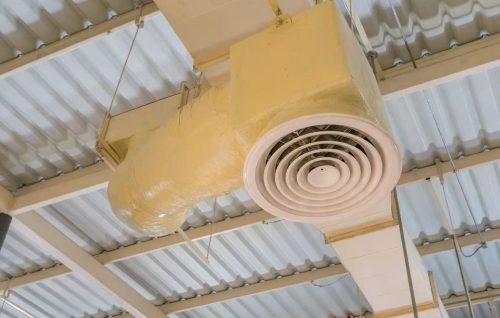-
What is an HVAC Diffuser? 2025-08-28
With excellent product quality and flexible customization capabilities, Fenglixing ventilators have been exported to more than 50 countrie
Read More -
Why do we choose aluminum alloy for product manufacturing? 2025-08-27
With excellent product quality and flexible customization capabilities, Fenglixing ventilators have been exported to more than 50 countrie
Read More -
How Can Ventilation Systems Help Save Energy and Reduce Emissions in the Green Building Trend? 2025-08-26
With excellent product quality and flexible customization capabilities, Fenglixing ventilators have been exported to more than 50 countrie
Read More
What is a grille?

A grille is a device used to cover vents, commonly found in environments with central heating or air conditioning systems. Its core function is to allow air to flow in both directions between a room and the central heating or cooling unit—both into the room and back into the unit.
Unlike components with dampers, grilles lack dampers to restrict airflow, allowing air to circulate freely. Furthermore, grilles lack visible damper-related structures, maintaining a simple, functional ventilation form. They come in a variety of materials, typically aluminum, bronze, steel, or stainless steel, and can be finished with finishes such as polished, anodized, or colored enamel, ensuring practicality and adapting to varying decor styles.
Although both diffusers and grilles in HVAC systems function as air circulation devices, they differ significantly in function, structure, and application scenarios, as follows:
1. Core functional differences
- diffuser:The core function is to guide and optimize airflow. Through specially designed blades or structures, ducted air is evenly distributed indoors at specific angles and directions (such as multi-directional and wall/ceiling attachment). This prevents localized airflow from being too strong or too weak, ensuring a more balanced indoor temperature and air speed for improved comfort.
Grille:The core function is to serve as a "cover" for the vent. Its main function is to protect the vent (prevent foreign objects from entering the duct) and allow air to circulate freely. It does not actively guide the direction of the airflow and only provides basic air inlet and outlet channels.

2.Differences in application scenarios
- diffuser:Suitable for scenarios requiring precise air distribution, such as large spaces like offices, shopping malls, and conference rooms, or areas requiring high temperature uniformity (such as laboratories and hospital wards). Airflow must be directed to cover the entire room to avoid localized uneven heating and cooling.
- Grille:Suitable for use in scenarios where airflow direction is not a priority, such as the outlet of a return duct (where only air return is required), a simple vent in a small room, or as a "protective cover" for equipment (such as the air inlet grille of an air conditioner outdoor unit).
3.Difference in airflow effect
- The airflow from the diffuser has a clear "directionality" and can form a specific airflow pattern (such as diffusing along the ceiling or sinking toward the ground), providing a wider and more uniform coverage area.
- The airflow from the grille is non-directional and usually goes straight back and forth, which can easily lead to excessive local airflow (such as high wind speed in the area facing the grille) and poor long-distance diffusion effect.
Summarize:
Simply put, diffusers are "active airflow experts," optimizing air distribution through structural design. Grilles, on the other hand, are "passive ventilation gatekeepers," providing a channel without interfering with airflow. While both serve HVAC systems, their functional positioning and application scenarios are completely different, so the choice should be based on actual needs.



